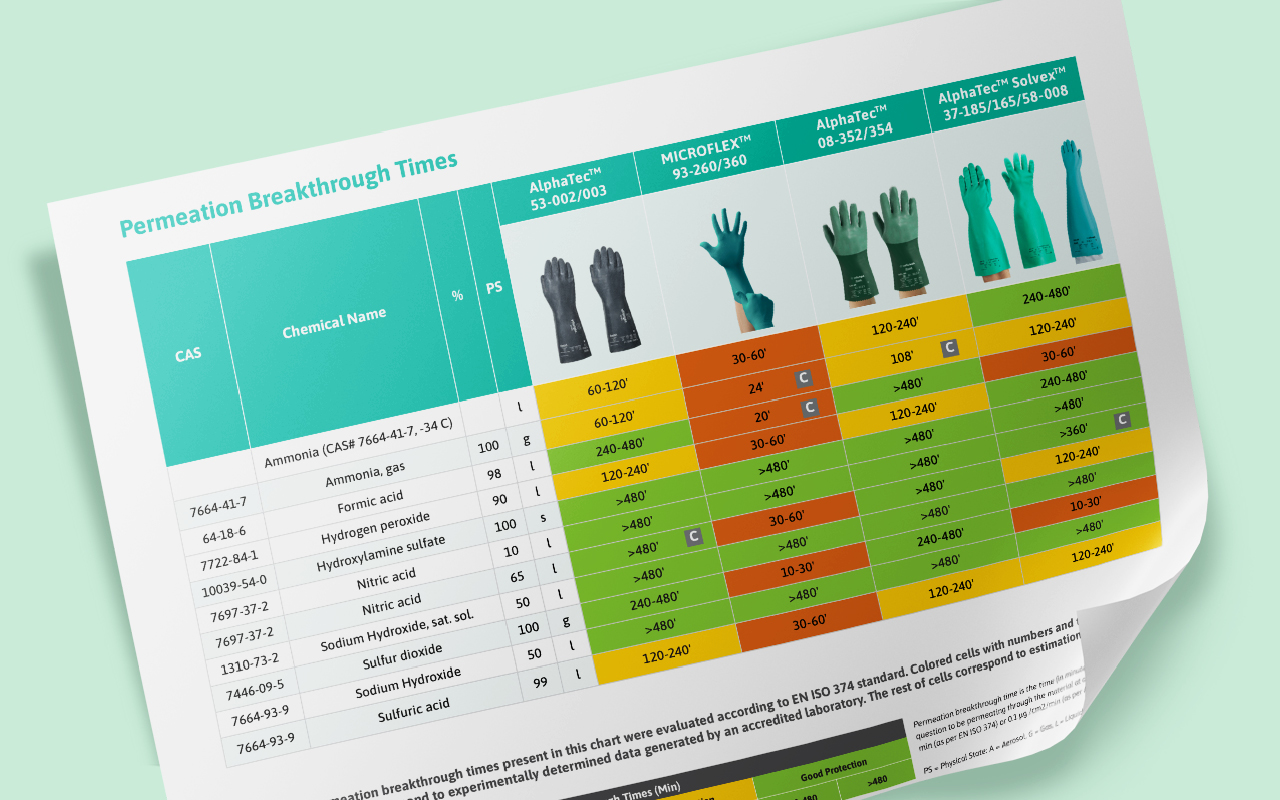Bunzl Safety & Lifting is proud to partner with Ansell to give our customers access to the AnsellGUARDIAN™ Chemical platform — a powerful tool that turns complex hazard data into clear, actionable insight.
In complex industrial environments, selecting the right personal protective equipment (PPE) for chemical hazards is challenging. AnsellGUARDIAN™ Chemical addresses that by combining a digital product selector, an expansive permeation and degradation database, and expert assessment services.
AnsellGUARDIAN™ Chemical works by correlating your specific chemical exposure and working conditions with empirical test data on Ansell’s gloves and suits. The system draws on a live database of permeation and degradation values, enabling you to compare candidate materials. It also offers a no-cost assessment and tailored recommendations to support risk assessments in your facility.
How it works
Exposure input: The user specifies which chemicals, concentrations, and exposure scenarios are involved.
Database matching: The tool cross-references Ansell’s internal permeation/degradation metrics for each candidate PPE material.
Ranking & recommendation: Receive suggestions on PPE combinations that balance chemical resistance, physical durability, and ergonomics.
Expert validation: You may opt to order additional testing or consult Ansell’s technical team to confirm suitability.
Why it benefits you
-
Streamlines PPE selection and reduces trial-and-error.
-
Access transparent permeation and degradation charts for thousands of chemicals.
-
Mitigate risk with rigorous chemical hazard assessments and compliance.
- Enjoy scalable coverage, from single chemicals to complex mixtures, with continual updates.

|